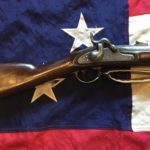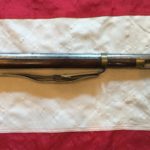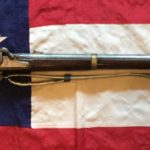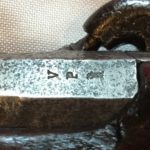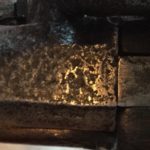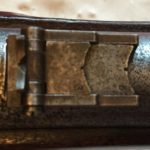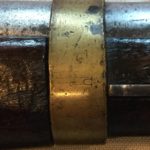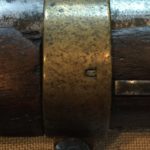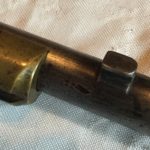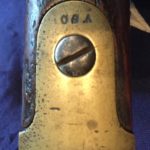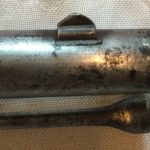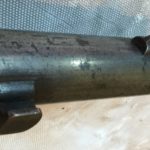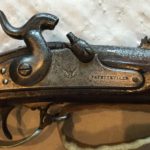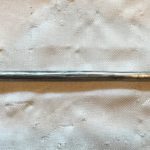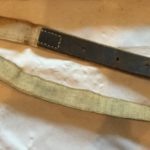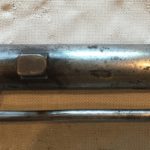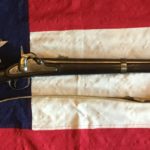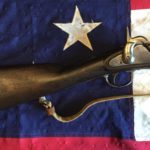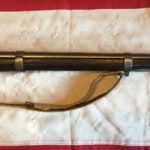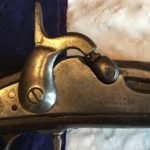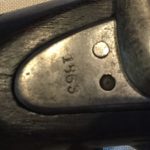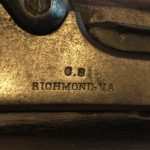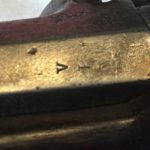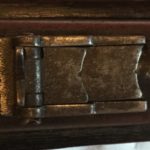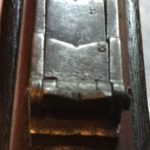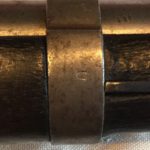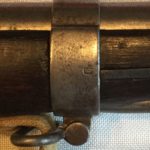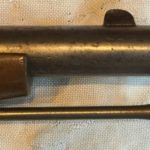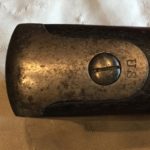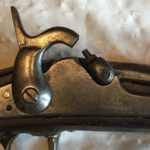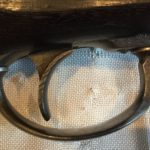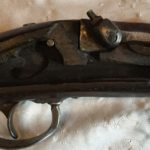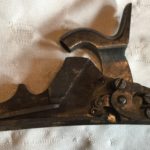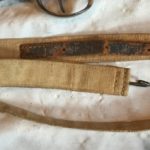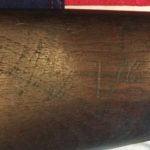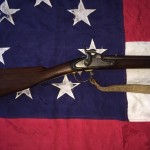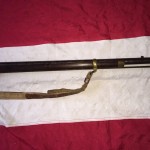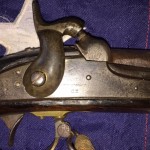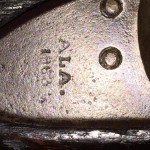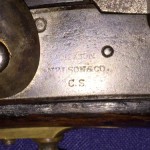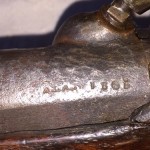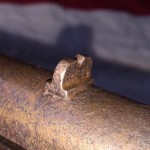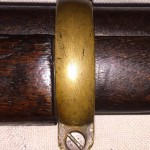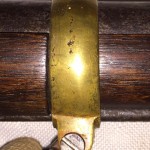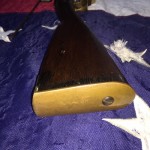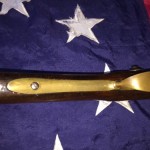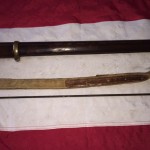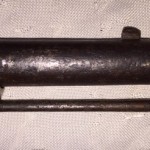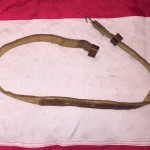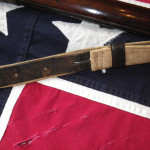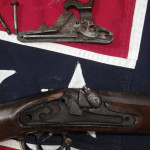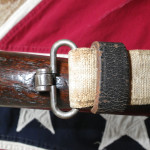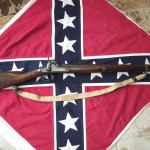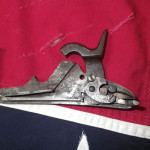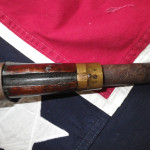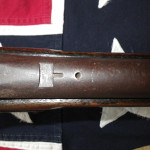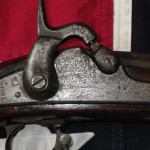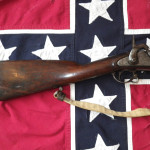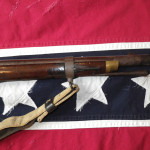- Fayetteville Rifle Shoulder Stock and Lockplate
- Fayetteville Rifle, Forward Stock & Barrel
- 1863 Fayetteville Armory Type III Rifle
- 1863 Fayetteville Rifle Type III Lock Plate
- Fayetteville Armory Proof Marks, VP & Eagle
- Fayetteville Barrel Stamped 1863
- 1863 Fayetteville Rifle Rear Sight
- Fayetteville Rifle Rear Barrel Band
- Fayetteville Rifle Type III Forward Barrel Band
- 1863 Fayetteville Rifle Nose Cap & Bayonet Lug
- Fayetteville Rifle Butt Plate, CSA
- 1863 Fayetteville Pinched Front Sight
- Type III Fayetteville Rifle Pinched Sight & Bayonet Lug
- 1863 Fayetteville Rifle Lock Plate, Full Cocked
- Fayetteville Rifle Ram Rod
- Confederate Linen Sling
- Fayetteville Rifle Type 3, Bayonet Lug & Front Sight
Union weapons went through a vigorous inspection process, if the viewing officer found flaws in the quality of the weapon he would reject it sending it back to the maker. The maker then would not get paid for the weapon potentially losing future contracts.
In the South it was a very different story, most armories and manufactures of weapons didn’t have much of a quality system. At the Richmond Armory, the Souths largest weapons factory there was a viewing process but most of the weapons that were viewed and proofed would not pass Northern standards.
However it was a much different story at the Fayetteville Armory. Phillip Burkhart, the former Harper’s Ferry mechanic and John Hall protégé served as master armourer for the Fayetteville Armory. He along with many of the mechanics, craftsman and laborers that worked at the Harper’s Ferry Armory were responsible for making the different versions of Fayetteville Rifles throughout the war.
Some of the equipment that was confiscated by Stonewall Jackson at Harper’s Ferry in May of 1861 was sent by rails to Richmond Virginia the rest was sent to the Fayetteville Armory in North Carolina along with many of the expert mechanics. This would give the Fayetteville Armory the quality equipment and expert craftsman they needed to make such a quality weapon that would even pass the strict quality inspections in the North.
The newest addition to the Civil War Arsenal is an 1863 Fayetteville Rifle Type III. Except for the S style hammer the rifle is a close copy to the U.S. Model 1861 rifle-musket. Clean straight lines and brass hardware make the Fayetteville a hard weapon not to like. The type III is different from the type II with its 1863 dated Lock Plate made entirely at Fayetteville. The Type II Lock Plates were made at the Richmond Armory and were very similar to the Richmond Lock Plates with the low profile hump, only difference is the markings on the plate.
Similar to the U.S. Model 1855 rifle the Fayetteville was designed with a stud on the right side of the muzzle for affixing a saber bayonet. Thousands of these fish scale bayonets were fabricated at the armory in 1862-1863. The saber bayonet was replaced with a socket bayonet by late 1863 on the Type IV Fayetteville’s for the remaining portion of the war.
I am looking for a fish scale Saber Bayonet, if anyone knows of one please please contact me at civilwararsenal@yahoo.com attn: Gene West. Thanks for stopping by, and if you have any questions about this rifle or any of the other weapons in my Arsenal feel free to ask…..oh and I’m always on the hunt for new weapons to add to my collection, especially Confederate. If you have any and are interested in selling them give me a shout maybe we can make a deal.

